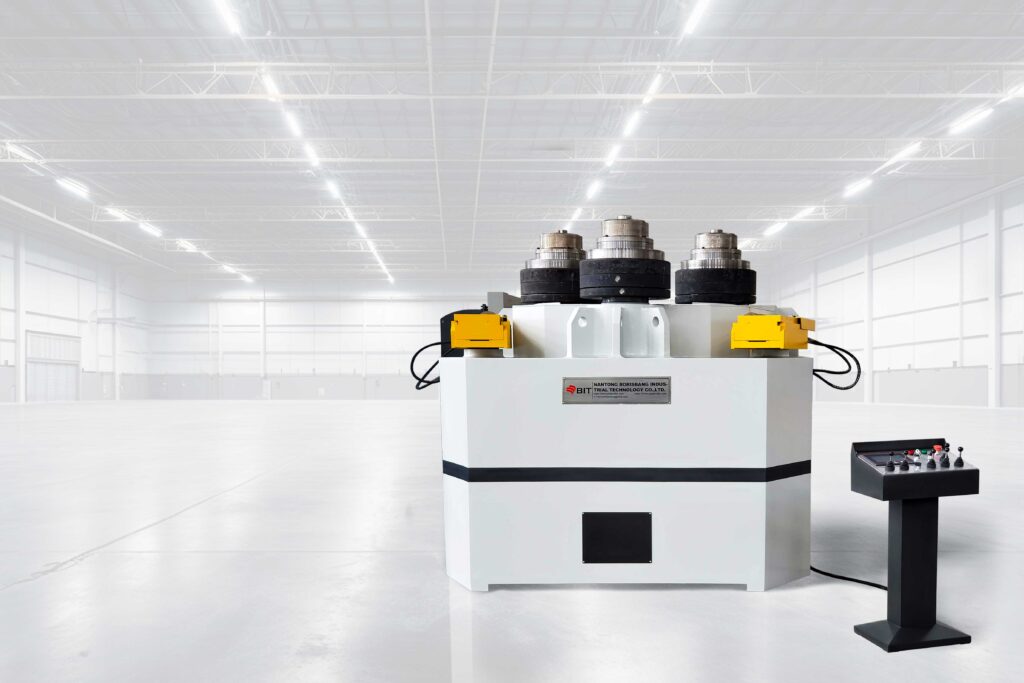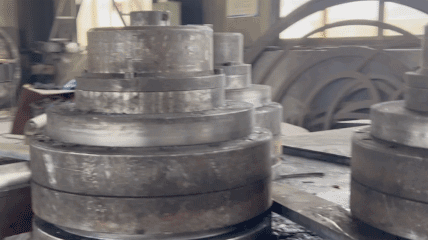Basic Profile Rolling Process: The top roll remains fixed but can rotate, while the two side rolls move up and down around a fixed center of rotation (either planetary motion or linear motion at a fixed angle). The two sides are equipped with bending guide rollers, which effectively ensure the bending quality of asymmetrical profile sections.
Double Pinch Profile Bending Machine Mechanism
As shown in the diagram, the PBC Profile Three-Roll Double Pinch Profile Bending Machine is used to cold-form metal profiles. The following describes the pre-clamping/pre-bending process in the profile rolling procedure.
Profile Rolling Process
Pre-Bending Phase

During the pre-bending phase, the position of the metal profile can be adjusted to apply bending pressure to its ends or specific sections, achieving the following two goals:
Pre-Bending: Reducing the unbent straight sections at the ends of the material to prepare it for the main rolling process, saving manufacturing costs.
Localized Cold Bending: Applying more pressure at specific points of the metal profile to consciously control its shape.
Second Step of Profile Rolling
After pre-bending, the metal profile is placed between the front and rear rolls for further bending. The metal profile will be bent into an arc shape or a closed circle. As the metal profile passes through the three contact points created by the rolls, it will take the desired shape.
What is Plastic Bending Deformation? Plastic bending deformation in metals refers to the change in shape and size of an object due to applied force. When pressure alters the shape of a material or object, deformation occurs. If the applied force is sufficient to cause permanent deformation, plastic deformation takes place.
Roll-Bending Process

The rear roll applies upward pressure to cause the metal profile to undergo plastic bending deformation, ultimately achieving the required shape.
Rotation and Friction
Due to the friction between the bending rolls and the metal profile, the three bending rolls begin to rotate, causing the metal profile to move longitudinally back and forth. The bending rolls alternate between forward and reverse rotations, making the metal profile move back and forth while the front roll continuously applies vertical or downward pressure.
Note: During this process, by controlling the position of the rear roll with CNC, a variable radius arc (multi-radius bending) can be achieved.
Plastic Deformation and Stress
During the bending process, the applied stress exceeds the yield limit of the metal, resulting in plastic deformation. As a result, the metal profile will take on the required shape by the end of the process.
Key Factors
To change the curvature of the desired profile, the position of the lower rolls can be adjusted. For larger profiles, multiple bending steps can be performed. By manually or via CNC adjusting the position of the lower roll, the bending process can be repeated until the desired shape is achieved.